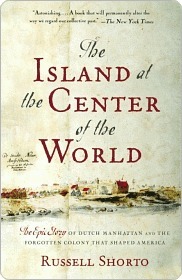More on this book
Community
Kindle Notes & Highlights
“[C]hildren should not be kept on too tight a rein, but allowed to exercise their childishness, so that we do not burden their fragile nature with heavy things,” advised the physician Johan van Beverwijck, the Dr. Spock/Benjamin Weil of his day, whose book Treasure of Health was a bestseller.
over the course of the seventeenth century the Netherlands produced one-half of all books published worldwide.
the Dutch provinces had broken new ground in writing into their 1579 de facto constitution the guarantee that “each person shall remain free, especially in his religion, and that no one shall be persecuted or investigated because of their religion.”
A much quoted forerunner of Arminius named Sebastian Castellio phrased it with persuasive Christian elegance: “Many will be damned on Judgment Day because they killed innocent people, but nobody will be damned because he killed nobody.”
Dutch global expansion during its century of empire was built around not settlement colonies but outposts, which explains why, even though the empire extended as far afield as India, Taiwan, and Java, the Dutch language is not spread around the globe the way English is.
Why American history has overlooked their accomplishment has to do in part with Anglocentrism and also probably with something as mundane as the way colonial studies have traditionally been divided in American universities: English departments focusing on the English colonies, the Spanish colonies covered in the Spanish department, and so on. This meant both that the Dutch colony was relegated to the margins (few American universities have Dutch departments) and that colonial studies as a whole were approached narrowly.
Had either failed, the English would probably have swept in before Dutch institutions were established, New York would have become another English New World port town like Boston, and American culture would never have developed as it did.
The law of “love peace and libertie … which is the glory of the Outward State of Holland,” they reminded him, extends even “to Jewes Turkes and Egiptians.” Therefore, they respectfully refused to obey. The so-called Flushing Remonstrance is considered one of the foundational documents of American liberty, ancestor to the first amendment in the Bill of Rights, which guarantees that the government “shall make no laws respecting an establishment of religion, or prohibiting the free exercise thereof.”
In fact, the currents running through the colony were more complex, the Netherlands being the source both of a legal code of tolerance and, at times, of the failure to adhere to it.
The thirteen original colonies were English colonies. The supporting evidence is overwhelming: the language we speak, our political traditions, many of our customs. This is all so obvious that we don’t question it. But it ought to be questioned. The original colonies were not all English, and the multiethnic makeup of the Manhattan colony is precisely the point.
Moving the story beyond the English takeover requires, first, realizing that “the Dutch” didn’t go anywhere.
It’s logical to assume that the Dutch representatives, on Stuyvesant’s orders, pushed for some of these. If so, there is an ironic twist here. Such a slate of individual rights and liberties, preserving the unique society that had come into being in the colony, was just what Van der Donck had fought for, and precisely what Stuyvesant had opposed during his seventeen years in office.
Which European power held ultimate control became less important to the Manhattanites than the relationships between their own ethnic communities and their ties to traders, shippers, and family in other parts of the world.


